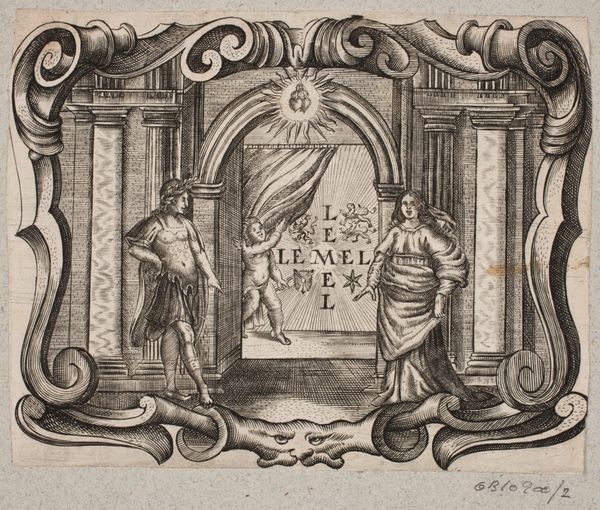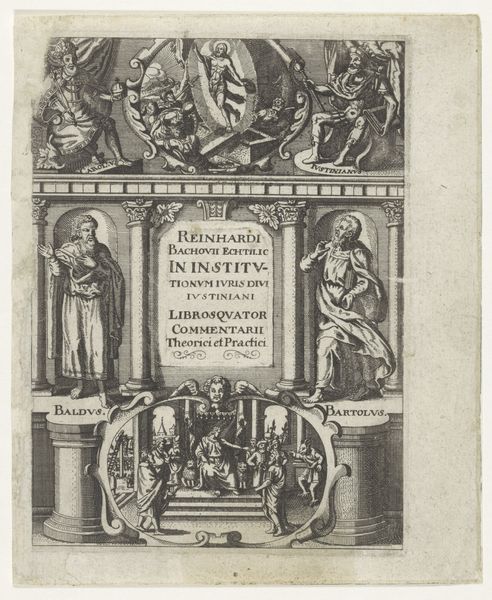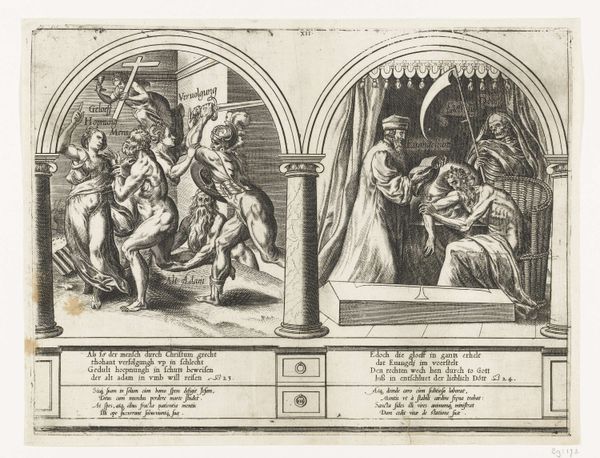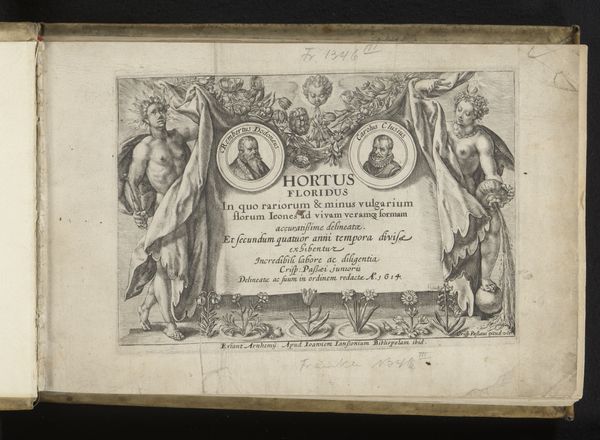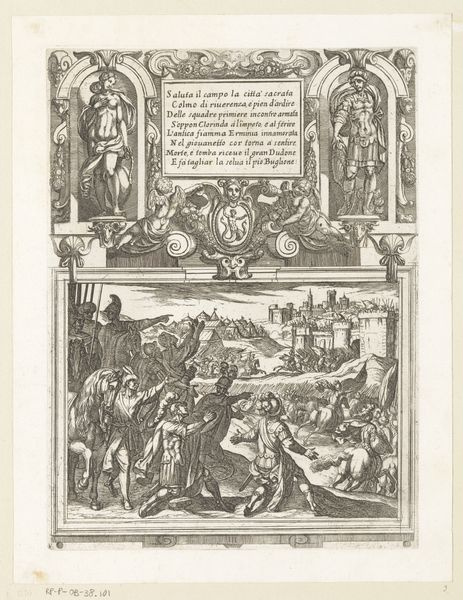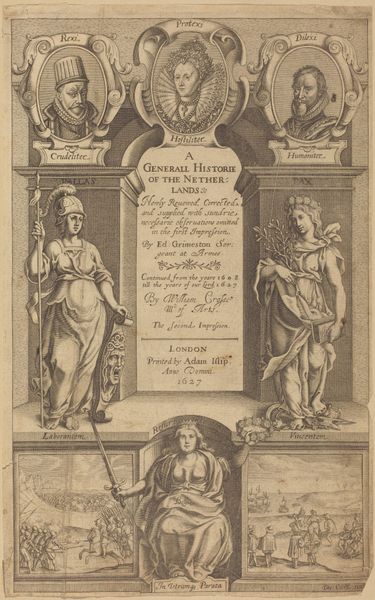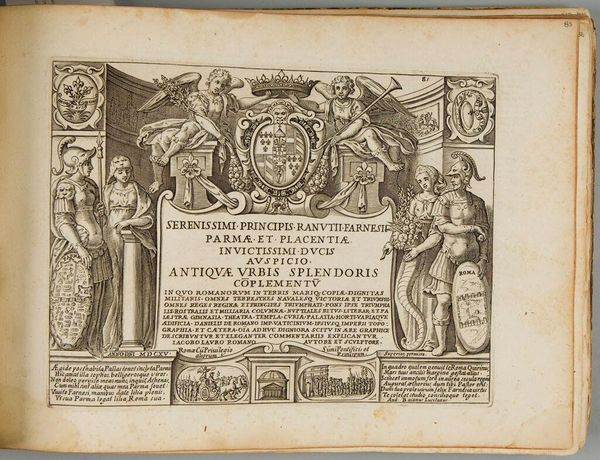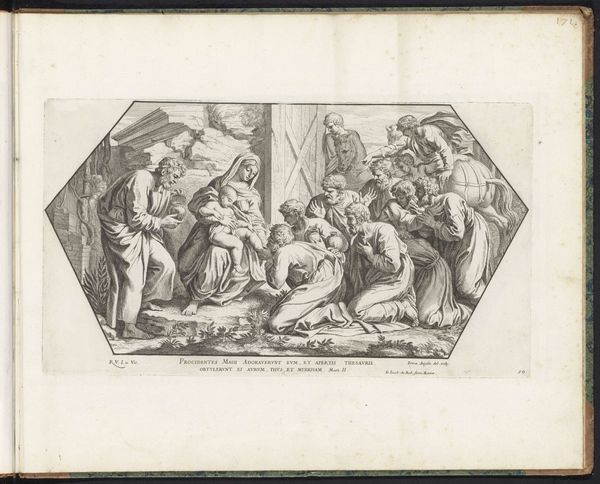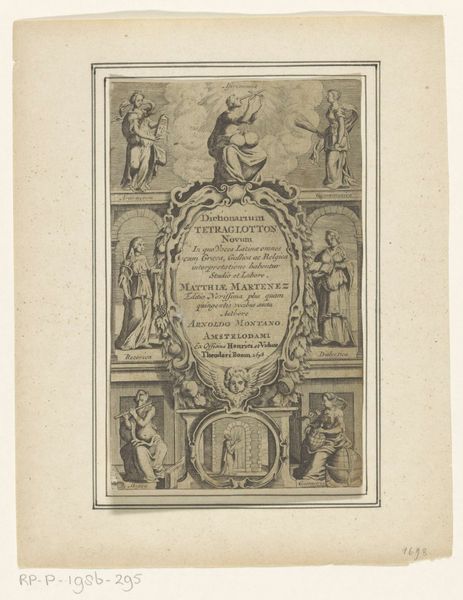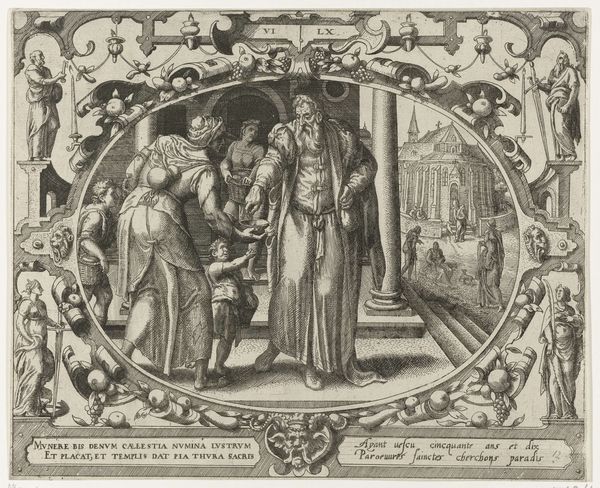
drawing, print, engraving
#
portrait
#
drawing
#
baroque
# print
#
old engraving style
#
figuration
#
line
#
early-renaissance
#
engraving
Dimensions: plate: 3 15/16 x 6 1/16 in. (10 x 15.4 cm) sheet: 6 5/16 x 9 1/16 in. (16 x 23 cm)
Copyright: Public Domain
Curator: The artwork we're looking at is a 1611 engraving entitled "Title to Topographia Variarum Regionum" by Simon Frisius. It’s currently held at the Metropolitan Museum of Art. Editor: Immediately, I am drawn to the figures flanking what seems to be a decorative cartouche. There is such contrasting, yet cohesive energy emanating from each side, with that intriguing hound seated so placidly. Curator: That contrast reflects, in many ways, the artistic and political environment in the early 17th century. Engravings, like this one, were essential tools for disseminating knowledge and shaping public perceptions of places and power, particularly within burgeoning scientific and humanist movements. Consider who commissioned this work, how it was distributed, and its role in constructing geographical understandings. Editor: I find it fascinating to examine this piece through the lens of identity. Who were these figures, really, and what archetypes or expectations were being constructed and reinforced by placing them here? What is the gaze it projects, especially within the context of growing European explorations and conquests? Curator: Absolutely. And let's not overlook the impact of artistic academies on such prints. They helped establish aesthetic norms while creating avenues for artists to gain recognition and access to patrons who might hold colonial power. Editor: Do you find it striking that the human figures are partially nude when this feels very much like something you would expect to find in a scientific textbook? Is it supposed to give the content an elevated, classical tone? Curator: Without question, these allusions connect cartography with an ideal classical tradition which lends credence to claims of dominion over the depicted "variarum regionum." Editor: I see how thinking about the political implications of distributing these topographical maps through carefully constructed visual narratives makes the seemingly objective presentation suddenly very subjective, and frankly, suspect. Curator: Indeed. Looking closely at pieces such as this reminds us how art functioned—and continues to function—in shaping cultural, historical, and political narratives. Editor: Right, I agree, understanding the motivations and biases embedded within visual media is paramount when seeking nuanced truth.
Comments
No comments
Be the first to comment and join the conversation on the ultimate creative platform.
